In recent years, the kitchen appliance industry has witnessed a remarkable shift in consumer preferences, with air fryers emerging as a staple in modern kitchens worldwide. This surge in popularity is not just a fleeting trend; it’s a testament to the evolving health consciousness among consumers and the relentless innovation within the industry. As manufacturers strive to capture a share of this burgeoning market, the significance of adhering to stringent safety and quality standards cannot be overstated. This article delves into the complexities of the turnkey UL certification process for air fryer Original Equipment Manufacturers (OEMs), exploring the nuances of market dynamics, the step-by-step certification journey, and the pivotal role OEMs play in this process. We’ll also examine real-world case studies of successful turnkey UL certifications and gaze into the future trends shaping the air fryer market. By the end, we aim to provide a comprehensive understanding of the challenges and opportunities that lie ahead for OEMs navigating this dynamic landscape.
I.TheGrowingDemandforAirFryersintheGlobalMarket
The global kitchen appliance market has witnessed a remarkable transformation over the years, with air fryers emerging as a standout product category. The growing demand for air fryers can be attributed to several key factors that have significantly reshaped consumer preferences and purchasing behaviors worldwide.
Air fryers have gained immense popularity due to their ability to offer a healthier alternative to traditional frying methods. These devices use hot air circulation to cook food, resulting in a crispy texture with significantly less oil than traditional frying, which appeals to health-conscious consumers who are increasingly seeking low-fat cooking options. The rise of health and wellness trends has propelled the demand for air fryers, as they allow users to enjoy their favorite fried foods without the guilt associated with deep frying.
Market growth statistics reflect this trend, with a substantial increase in the sales of air fryers over the past few years. According to market research reports, the global air fryer market size is projected to reach several billion dollars by 2025, showcasing a Compound Annual Growth Rate (CAGR) of over 10%. This surge in sales is driven by the expanding middle class in developing countries, who have greater disposable income to spend on innovative kitchen appliances.
The versatility of air fryers has also contributed to their growing demand. These appliances can be used to cook a wide range of dishes, from vegetables and meats to desserts, making them a versatile addition to any kitchen. This versatility is further enhanced by the availability of various models, each with unique features and capabilities that cater to different cooking styles and preferences.
Another factor fueling the demand for air fryers is the shift towards convenience in food preparation. In today’s fast-paced world, consumers are looking for appliances that can save them time and effort. Air fryers offer a quick and easy cooking method that requires minimal pre-preparation and cleanup, which aligns perfectly with the busy lifestyles of modern consumers.
Additionally, the influence of social media and cooking influencers has played a significant role in promoting air fryers. These platforms have showcased the endless possibilities of air fryer cooking, inspiring consumers to try out the appliance themselves. The popularity of cooking challenges and sharing recipes has further amplified the demand for air fryers, as they become a staple in many aspiring home chefs’ toolkits.
The environmental consciousness among consumers has also contributed to the popularity of air fryers. As awareness of the environmental impact of cooking methods grows, consumers are increasingly looking for appliances that are energy-efficient and sustainable. Air fryers, being more energy-efficient than conventional ovens and deep fryers, align with these green values and are therefore more appealing to environmentally conscious consumers.
Lastly, the entry of new players and innovative designs into the market has helped in diversifying the air fryer segment. From countertop models to multi-functional air fryer-oven combinations, the variety of options has made it easier for consumers to find an air fryer that fits their needs and preferences.
In conclusion, the growing demand for air fryers in the global market is a result of a perfect storm of health trends, technological advancements, consumer preferences, and environmental concerns. As the market continues to expand, air fryers are poised to become an indispensable kitchen staple, offering a healthier, more convenient, and sustainable way to cook.
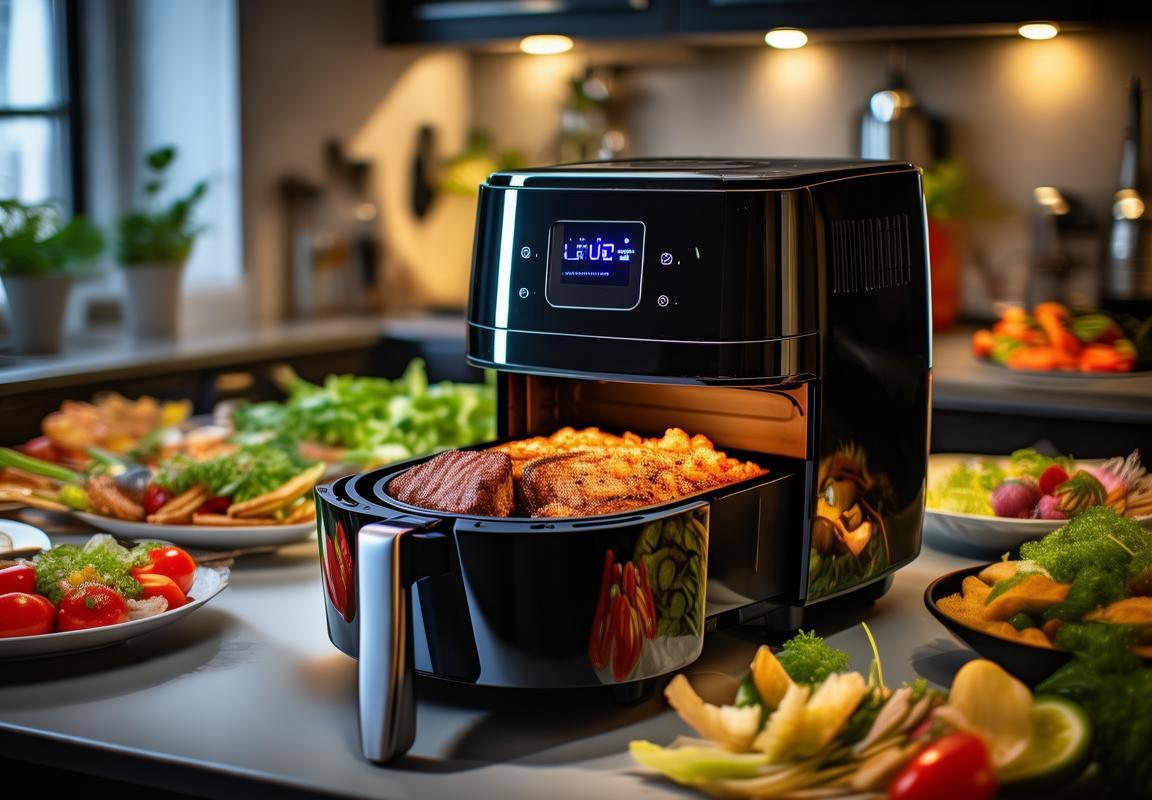
II.TheImportanceofULCertificationforAirFryerOEMs
In the competitive landscape of the kitchen appliance industry, obtaining UL (Underwriters Laboratories) certification for air fryer Original Equipment Manufacturers (OEMs) is not just a regulatory requirement; it’s a strategic move that can significantly impact a brand’s reputation and marketability. Here’s why UL certification holds such importance for air fryer OEMs:
-
Ensuring Safety and ComplianceUL certification is a globally recognized mark of safety and quality. It signifies that an air fryer has undergone rigorous testing to meet or exceed stringent safety standards. For OEMs, this means their products are less likely to cause harm to consumers, reducing the risk of recalls and liability issues.
-
Building Consumer TrustConsumers are increasingly seeking out products that come with a seal of approval from respected third-party organizations. The UL mark is well-known and trusted, which can instill confidence in potential buyers. A UL-certified air fryer can differentiate an OEM’s product from the competition, making it more appealing to cautious shoppers.
-
Access to Key MarketsThe European Union and the United States have specific regulatory requirements for electrical appliances. Without UL certification, OEMs may find it challenging to enter these markets. Distributors and retailers often require this certification as a prerequisite for stocking or selling products, making it a non-negotiable for serious players in the industry.
-
Facilitating International TradeUL certification is not limited to the EU and the US; it is recognized worldwide. For OEMs looking to expand their reach into international markets, having a UL-certified product can simplify the process. It eliminates the need for additional certifications in each country, saving time and resources.
-
Demonstrating Commitment to QualityThe certification process involves a comprehensive evaluation of the product’s design, materials, manufacturing processes, and performance. By achieving UL certification, OEMs demonstrate their commitment to delivering high-quality, reliable products that meet industry standards.
-
Reducing Risk of Counterfeit ProductsThe UL certification process includes traceability measures that can help OEMs protect their brand from counterfeiters. By ensuring that only genuine products carry the UL mark, OEMs can maintain the integrity of their brand and the trust of their customers.
-
Streamlining Regulatory ProcessesFor OEMs that deal with multiple regulatory frameworks, having a UL certification can streamline the compliance process. The certification can often be used as a benchmark for meeting other international standards, reducing the need for redundant testing and paperwork.
-
Enhancing Product Lifecycle ManagementThe certification process also provides valuable insights into the product’s performance and potential risks. This information can be used to improve product design, enhance manufacturing processes, and extend the product lifecycle.
-
Competitive AdvantageIn a crowded market, a UL certification can be a differentiator. It can attract distributors, retailers, and end-users who prioritize safety and quality. This can lead to increased market share and a stronger position in the industry.
-
Long-Term Cost SavingsWhile the initial cost of obtaining UL certification may seem high, it can lead to long-term savings. By reducing the risk of product failures, recalls, and legal issues, OEMs can avoid significant financial losses that could arise from safety-related problems.
In conclusion, UL certification for air fryer OEMs is not just about meeting regulatory requirements; it’s about creating a foundation of trust, compliance, and quality that can drive business growth and sustainability in a highly competitive global market.

III.TheTurnkeyApproachtoULCertificationforAirFryerOEMs
In the competitive landscape of the air fryer market, OEMs are constantly seeking ways to differentiate themselves and ensure compliance with stringent safety standards. This is where the turnkey approach to UL certification for air fryer OEMs comes into play, offering a comprehensive solution that simplifies the certification process and enhances marketability.
The turnkey approach to UL certification is a one-stop service that manages every aspect of the certification process, from initial assessment to final approval. For air fryer OEMs, this means a streamlined experience that reduces the complexity and time involved in obtaining certification.
One of the key benefits of a turnkey solution is the elimination of the need for OEMs to navigate the intricacies of UL certification alone. This includes understanding the technical requirements, gathering necessary documentation, and coordinating with various testing laboratories. A turnkey provider takes on these responsibilities, ensuring that all aspects of the certification process are handled efficiently and correctly.
A turnkey provider typically starts by conducting a thorough assessment of the air fryer’s design and manufacturing process. This includes reviewing the product’s safety features, electrical components, and material specifications. By doing so, they can identify any potential compliance issues early on, allowing OEMs to address them before moving forward.
Next, the turnkey provider coordinates the necessary testing and evaluation. This involves sending samples of the air fryer to certified laboratories for rigorous testing to ensure they meet UL standards. These tests can include electrical safety, fire resistance, and structural integrity, among others. The turnkey provider acts as the liaison between the OEM and the laboratory, ensuring that the testing process is smooth and that all results are accurately documented.
Once the testing phase is complete, the turnkey provider focuses on the documentation aspect. This is a critical step, as it involves compiling all the necessary evidence to support the air fryer’s compliance with UL standards. This includes technical drawings, manufacturing process details, and safety data sheets. The turnkey provider’s expertise in this area ensures that the documentation is comprehensive and meets all regulatory requirements.
Another important aspect of the turnkey approach is the factory inspection. UL requires that the manufacturing facility producing the air fryers adheres to specific quality control and safety standards. The turnkey provider arranges for a factory audit, where UL-certified inspectors verify that the manufacturing processes are in line with these standards. This not only ensures compliance but also provides OEMs with a quality assurance system that can be used to improve their production processes.
Once all the necessary assessments, testing, and documentation are complete, the turnkey provider takes care of the submission process. They ensure that all the required information is accurately presented to UL, streamlining the approval process. This often includes preparing and submitting the application, following up on any requests for additional information, and managing the communication between the OEM and UL.
The turnkey approach also offers flexibility for OEMs. Since the service is comprehensive, it can accommodate different scales of production, from small batch runs to large-scale manufacturing. This is particularly beneficial for OEMs that are just entering the market or looking to expand their product line, as it allows them to focus on their core competencies while leaving the certification process to the experts.
Furthermore, a turnkey provider often has a deep understanding of the regulatory environment in both the European and American markets. This knowledge can be invaluable in helping OEMs navigate the different requirements and standards that may apply in various regions. It ensures that the air fryers are not only UL certified but also compliant with local regulations, which is essential for successful market entry.
In conclusion, the turnkey approach to UL certification for air fryer OEMs is a strategic solution that simplifies the complex process of obtaining certification. By handling the entire process from start to finish, turnkey providers allow OEMs to focus on what they do best—manufacturing innovative and safe air fryers—while ensuring that their products meet the highest safety and quality standards. This comprehensive service not only saves time and resources but also enhances the OEM’s reputation and marketability in a highly competitive industry.
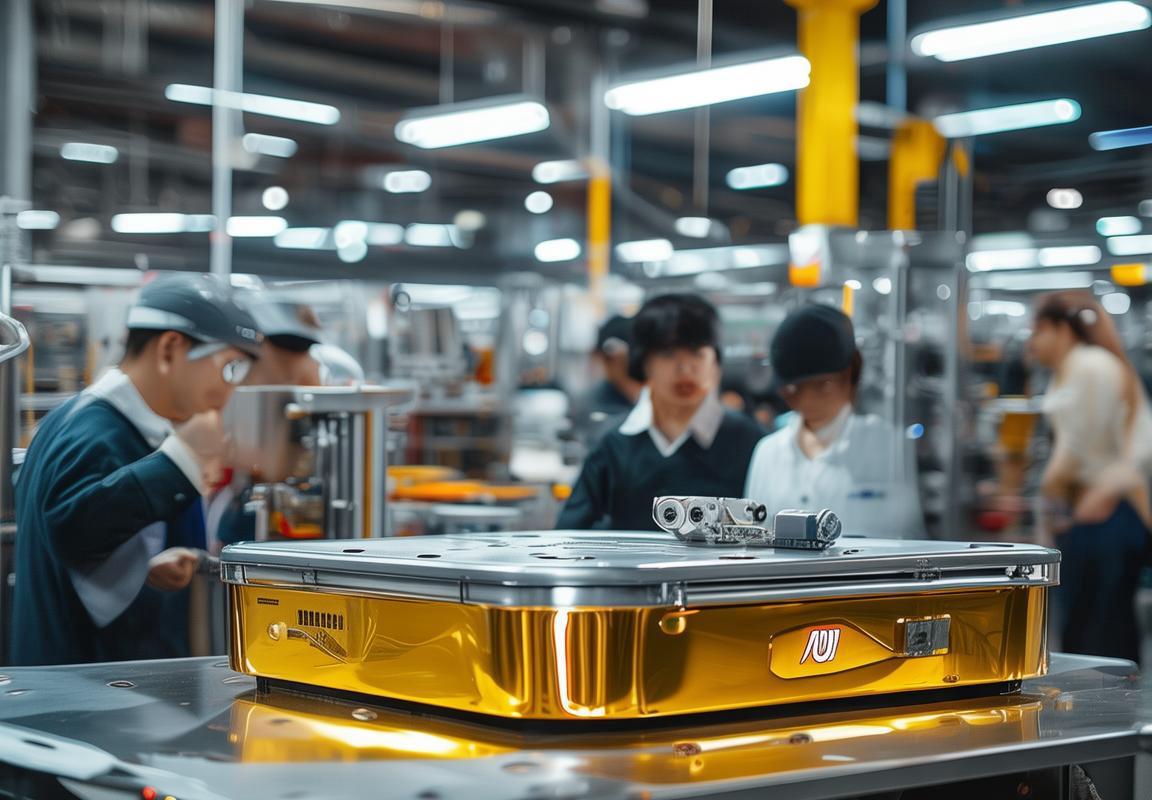
IV.TheEuropeanandAmericanMarketDynamics
In the competitive landscape of global air fryer markets, the dynamics in Europe and America are distinct yet interconnected. Here’s an exploration of these unique market environments:
The European market, known for its stringent regulatory standards, has a strong focus on consumer safety and environmental sustainability. Consumers in this region are highly aware of the health implications of cooking methods and often prefer appliances that are energy-efficient and eco-friendly. As a result, air fryer OEMs must navigate regulations like the EU’s Energy Labelling Directive and the Restriction of Hazardous Substances (RoHS) directive, which dictate the use of certain materials and energy consumption levels.
In the United States, the market is characterized by diverse consumer preferences and a regulatory framework that emphasizes safety above all. The U.S. Consumer Product Safety Commission (CPSC) oversees product safety, and the National Electrical Code (NEC) sets the standards for electrical installations. American consumers, while also concerned with health and energy efficiency, are often more influenced by brand reputation and technological advancements.
The European Union’s diverse range of countries means that air fryer OEMs must contend with various languages, cultures, and regulations. For instance, while the UK and Germany may share a common language, their specific market regulations can differ significantly. This necessitates a nuanced approach to marketing and compliance, where OEMs must tailor their products and strategies to meet the expectations of local consumers.
In the U.S., the market is somewhat more uniform, but it’s still subject to regional variations. For example, certain regions may have specific codes or standards that air fryer manufacturers need to adhere to. This diversity in the American market requires OEMs to be flexible and adaptable, ensuring that their products are not only safe and compliant but also resonate with the local consumer base.
Energy efficiency remains a key concern for both European and American consumers. However, the U.S. tends to have more specific requirements for energy labeling and efficiency, with the Energy Star program setting a benchmark for energy-saving appliances. In Europe, the Energy Labeling Directive applies to all household appliances, including air fryers, and manufacturers must ensure that their products meet the required energy efficiency criteria to be labeled accordingly.
Safety standards are paramount in both markets, but the approach to certification can vary. In the EU, products are subject to the CE marking, which signifies conformity with EU health, safety, and environmental standards. In the U.S., the UL (Underwriters Laboratories) certification is a key requirement for electrical and electronic products, ensuring that they meet safety standards.
The American market, with its robust testing and certification processes, demands a high level of quality and safety from air fryer OEMs. The UL certification process is rigorous and comprehensive, covering aspects like electrical safety, fire resistance, and structural integrity. This certification not only assures consumers of a product’s safety but also enhances the credibility and marketability of the brand.
On the other hand, the European market, while also valuing safety, places a strong emphasis on environmental considerations. The WEEE (Waste Electrical and Electronic Equipment) Directive and the RoHS directive require manufacturers to design products for recycling and to limit the use of hazardous materials. This focus on sustainability has led to innovations in air fryer design, such as the use of recyclable materials and energy-saving technologies.
In conclusion, the European and American air fryer markets present unique challenges and opportunities. While both regions prioritize safety and efficiency, the specific regulations, consumer preferences, and market dynamics require OEMs to approach product development and compliance strategies with careful consideration and adaptability. Understanding these differences is crucial for any air fryer OEM looking to establish a strong presence in these dynamic markets.

V.TheTurnkeyULCertificationProcess:Step-by-Step
Understanding the complexities of the UL certification process can be daunting, especially for Original Equipment Manufacturers (OEMs) in the air fryer industry. Here’s a detailed breakdown of each step involved in achieving turnkey UL certification for air fryers:
-
Initial Assessment and ResearchThe journey begins with a thorough assessment of the air fryer’s design and components. OEMs must identify all electrical, mechanical, and safety aspects that could impact certification. Researching relevant UL standards and regulations is crucial, as these will guide the certification process.
-
Development of a Compliance PlanWith a clear understanding of the requirements, OEMs need to create a compliance plan. This includes detailing how each aspect of the air fryer will meet or exceed the necessary safety standards. It’s here that potential challenges and solutions are mapped out.
-
Component Testing and Quality AssuranceEach component of the air fryer must undergo individual testing to ensure compliance with UL standards. This includes materials testing, electrical safety checks, and structural integrity assessments. Quality assurance protocols are crucial to ensure that only the highest standards are met.
-
Electrical and Safety TestingThe air fryer as a whole must pass rigorous electrical and safety tests. This includes evaluating the unit’s ability to withstand electrical surges, proper grounding, and the absence of sharp edges or exposed parts that could pose a risk to users. Fire safety is also a major concern, with tests to ensure the product does not overheat or pose a fire hazard.
-
Environmental and EMI/RFI TestingIn today’s market, environmental considerations are paramount. Air fryers must be tested to ensure they meet emissions standards and do not interfere with other electronic devices (EMI/RFI). This includes tests for energy efficiency, noise levels, and the potential impact on wireless devices.
-
Compliance with International StandardsFor OEMs looking to enter global markets, compliance with international standards like CE (Conformité Européenne) in Europe is crucial. The turnkey certification process should address these standards alongside UL certification, ensuring a seamless entry into both American and European markets.
-
Preparation of Technical DocumentationComprehensive technical documentation is essential for the UL certification process. This includes detailed design drawings, material specifications, safety test results, and any other information required by UL. OEMs must ensure that this documentation is accurate, up-to-date, and readily available.
-
Factory Audit and InspectionUL conducts a factory audit to verify that the manufacturing process adheres to the compliance plan and meets the required standards. This includes inspections of the manufacturing line, quality control procedures, and documentation practices. Any discrepancies found must be rectified before certification can be granted.
-
UL Evaluation and ApprovalOnce all tests are passed and the factory audit is complete, UL evaluates the entire submission. If the product meets all criteria, it is granted UL certification. This certification not only signifies compliance with safety standards but also enhances the product’s marketability.
-
Continuous Improvement and RecertificationThe certification process doesn’t end with the initial approval. As new standards emerge and the market evolves, OEMs must stay compliant. Regular updates to the product design and manufacturing processes are necessary, and products may require recertification to maintain their UL listing.
-
Marketing and Branding with UL CertificationWith UL certification in hand, OEMs can market their air fryers with confidence. The UL mark is a powerful brand differentiator, assuring consumers of the product’s safety and quality. It can also open doors to partnerships and distribution channels that value certified products.
-
Ongoing Support and MaintenanceThroughout the certification process and beyond, OEMs should seek ongoing support from their certification partner. This includes assistance with maintaining compliance, addressing any future changes in standards, and managing any issues that may arise during the product lifecycle.
The turnkey UL certification process for air fryers is a comprehensive journey that requires meticulous attention to detail, a deep understanding of safety standards, and a commitment to quality. By navigating each step thoughtfully, OEMs can ensure that their products not only meet but exceed the expectations of safety-conscious consumers in both Europe and the United States.
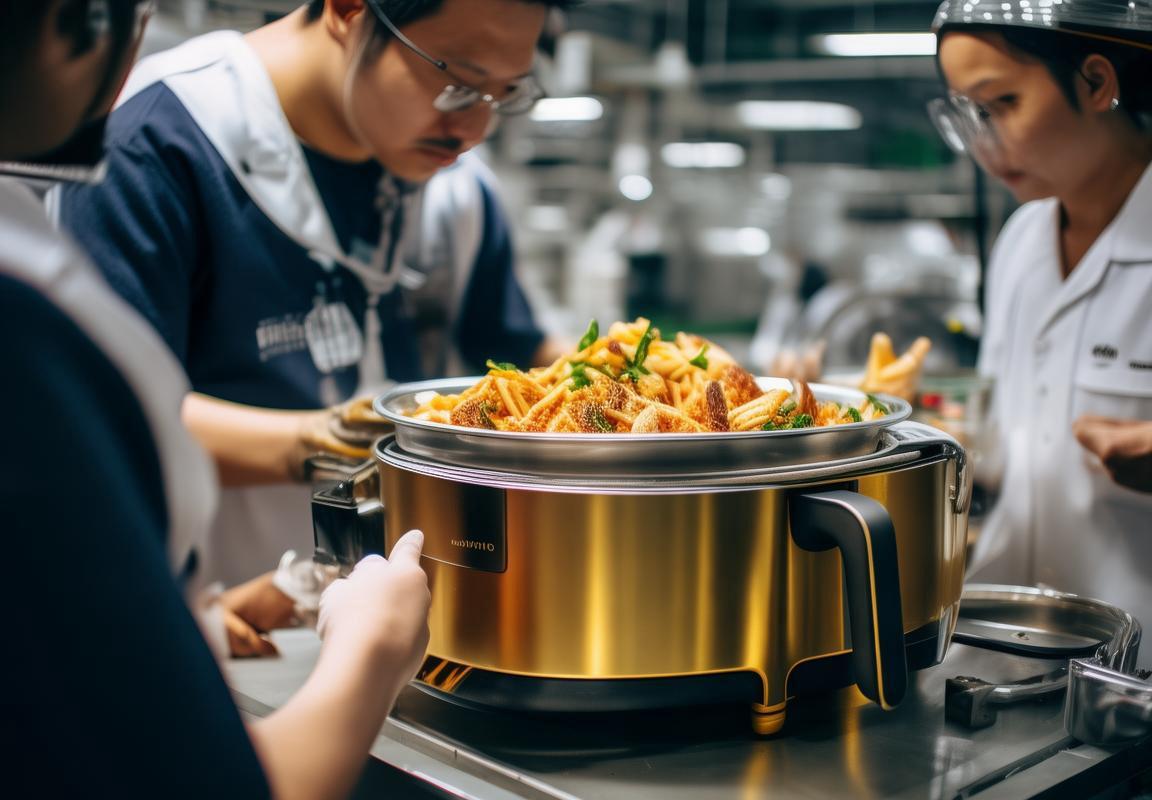
VI.TheRoleofOEMsintheTurnkeyULCertificationProcess
Navigating the complexities of certification can be daunting, but for Original Equipment Manufacturers (OEMs) in the air fryer market, understanding their role in the turnkey UL Certification process is crucial. Here’s how OEMs can effectively engage and benefit from this process:
Understanding OEM Responsibilities- OEMs must ensure that their products meet the necessary safety standards and regulations set by the Underwriters Laboratories (UL).- This involves not just the air fryer itself but also all components and materials used in the manufacturing process.
Collaborating with Certification Bodies- OEMs need to work closely with third-party certification bodies to initiate and manage the UL Certification process.- These bodies will guide the OEM through the necessary testing and compliance procedures, ensuring a smooth path to certification.
Product Design and Engineering Compliance- OEMs must design and engineer their air fryers to meet UL’s stringent safety and performance criteria.- This includes incorporating features that prevent electrical hazards, thermal risks, and mechanical failures.
Material Selection and Quality Control- The choice of materials is critical, as they must be UL-rated and meet fire safety standards.- OEMs must also implement a robust quality control system to ensure that every component meets these high standards.
Testing and Evaluation- The air fryer and its components must undergo a series of tests to assess their safety, performance, and durability.- OEMs should be prepared to provide detailed technical documentation and samples for testing.
Documentation and Reporting- Comprehensive documentation is essential throughout the certification process.- OEMs must maintain records of all design, manufacturing, and testing activities, which may include material specifications, test results, and compliance reports.
Communication and Coordination- Effective communication with all stakeholders is key to a successful certification process.- This includes keeping in touch with the certification body, suppliers, and any other parties involved in the production and certification of the air fryer.
Addressing Non-Compliance Issues- If non-compliance issues arise during the certification process, OEMs must be ready to address them promptly.- This may involve modifying the product design, sourcing different components, or revising manufacturing processes.
Understanding Certification Timelines and Costs- OEMs should have a clear understanding of the timeline and costs associated with the UL Certification process.- This includes both the initial certification and any subsequent audits or recertifications.
Engaging with Technical Experts- OEMs may need to consult with technical experts who specialize in electrical safety and compliance.- These experts can provide guidance on best practices and help ensure that the air fryer meets all necessary standards.
Adapting to Market-Specific Regulations- The certification process may vary slightly depending on the market, whether it’s the EU or the US.- OEMs must be adaptable and understand the nuances of each region’s regulations.
Maintaining Compliance Post-Certification- Once certified, OEMs must continue to adhere to UL standards and maintain the quality of their products.- This includes regular quality checks and staying informed about any updates to UL standards.
By actively participating in the turnkey UL Certification process, OEMs can not only ensure their air fryers meet safety standards but also gain a competitive edge in the market. Their role in this process is multifaceted, encompassing design, engineering, quality control, and ongoing compliance efforts.
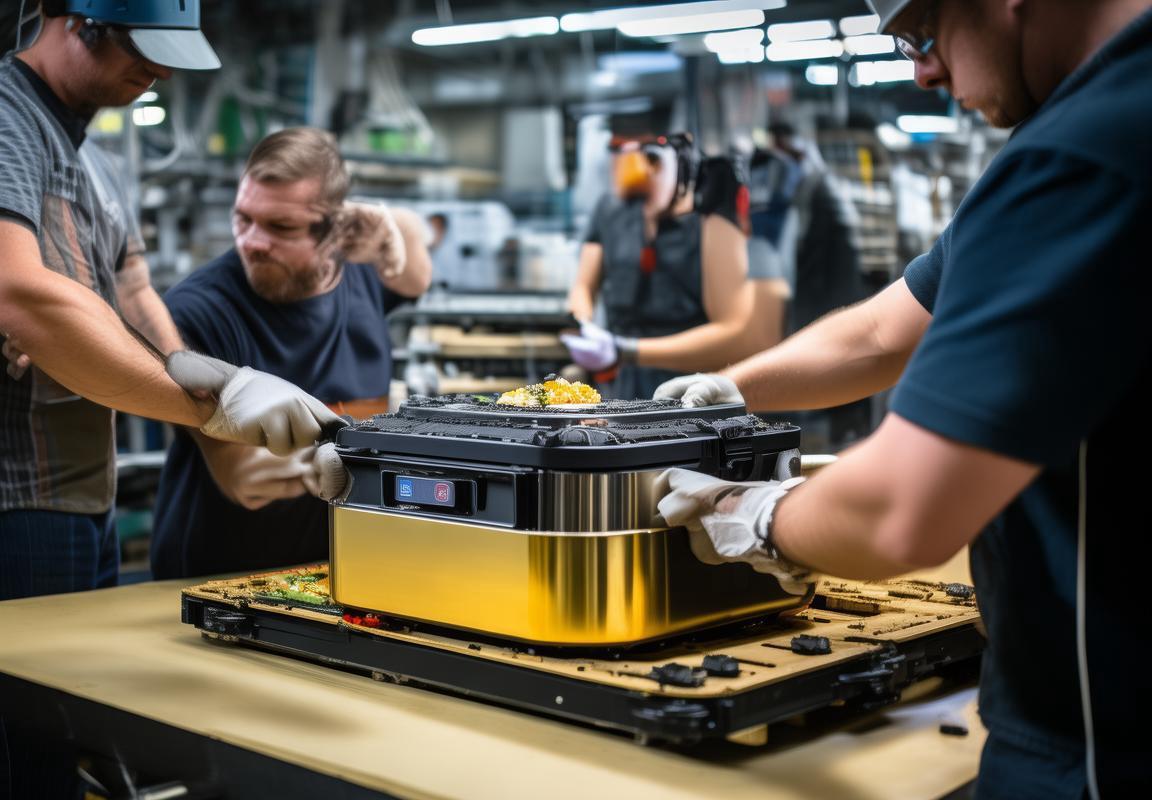
VII.CaseStudies:SuccessfulTurnkeyULCertificationforAirFryerOEMs
In the competitive landscape of air fryer OEMs, several companies have successfully navigated the turnkey UL certification process, showcasing the potential for streamlined compliance and market entry. Here are a few case studies that highlight their experiences:
- Company A’s Journey to Turnkey UL Certification
- Company A, a mid-sized OEM, faced the challenge of meeting the stringent safety standards required for their air fryer products to enter the European and American markets.
- They partnered with a turnkey certification provider to manage the entire process, from initial design review to final certification.
- The provider conducted thorough risk assessments, ensuring that all components and materials met UL standards.
- Company A’s product was successfully certified, allowing them to expand their market reach and build consumer trust.
- Streamlining Compliance with Turnkey Solutions
- Company B, a new entrant in the air fryer market, recognized the complexity of UL certification but lacked the internal expertise to manage it.
- By opting for a turnkey solution, they were able to focus on their core competencies while the certification process was handled by experts.
- The turnkey provider guided them through each step, from selecting the right testing laboratories to preparing the necessary documentation.
- The result was a smooth certification process that led to timely market entry and a competitive edge.
- Overcoming Design Challenges with Turnkey Support
- Company C encountered design challenges that posed a risk to the safety and compliance of their air fryer models.
- The turnkey certification partner identified potential issues early on and worked closely with the design team to rectify them.
- Through collaborative problem-solving, the OEM was able to modify their designs to meet UL standards without compromising on functionality.
- This case study demonstrates how turnkey services can prevent costly redesigns and delays.
- Expanding Global Reach with Turnkey UL Certification
- Company D, an established OEM with a strong domestic market presence, sought to expand into international markets.
- They chose a turnkey certification service to ensure their air fryers were compliant with both European and American regulations.
- The provider’s comprehensive approach covered not only UL certification but also CE marking, simplifying the process for the OEM.
- With their products now certified for global markets, Company D has seen a significant increase in international sales.
- Sustainable Solutions and Turnkey Certification
- Company E, committed to sustainability, faced the additional challenge of ensuring their eco-friendly air fryers were also UL compliant.
- The turnkey certification partner helped them navigate the complexities of green certifications, ensuring that their product met both environmental and safety standards.
- This case study shows how turnkey services can support OEMs in integrating sustainability into their product development and certification processes.
- Building Consumer Confidence with Turnkey Certification
- Company F, a small startup, knew that gaining consumer trust was crucial for their success.
- By choosing a turnkey certification process, they were able to present their UL certification as a mark of quality and safety to potential customers.
- The turnkey provider’s assistance in marketing the certification helped Company F differentiate their product in a crowded market.
- This case study underscores the importance of certification in building brand reputation and customer loyalty.
These case studies illustrate the value of turnkey UL certification for air fryer OEMs, highlighting how comprehensive support can lead to successful market entry, compliance, and growth.
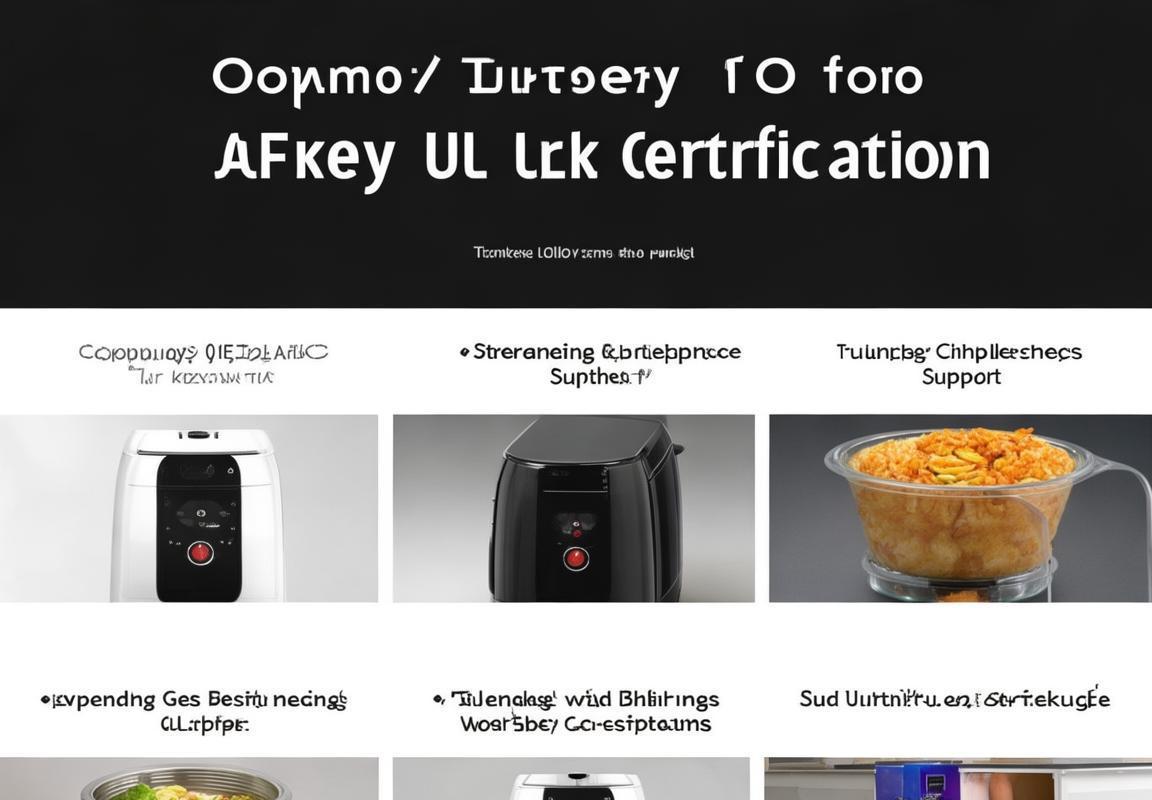
VIII.FutureTrendsandPredictionsintheAirFryerMarket
In the ever-evolving landscape of kitchen appliances, air fryers have surged in popularity, thanks to their health benefits and convenience. As we look to the future, several trends and predictions are shaping the air fryer market, poised to influence consumer preferences and OEM strategies.
The integration of smart technology is becoming a norm in air fryers, with features like remote control via smartphone apps and smart connectivity. These advancements not only enhance user experience but also open up opportunities for data analytics and personalized cooking experiences.
Health and wellness remain at the forefront, with consumers increasingly seeking appliances that support their lifestyle choices. Air fryers that offer adjustable cooking times and temperatures, as well as options for air-frying various types of foods, are likely to gain popularity.
Sustainability is another key trend. As environmental concerns grow, OEMs are under pressure to create air fryers with eco-friendly designs, such as energy-efficient motors and recyclable materials. This not only aligns with consumer values but can also lead to a competitive edge in the market.
The market for air fryers is expanding beyond the kitchen. Portable and compact models are gaining traction for outdoor cooking and camping, while air fryer ovens are blending the benefits of air frying with those of traditional ovens, offering a versatile solution for meal preparation.
Innovation in cooking methods is also on the rise. From air fryers that combine air frying with steam cooking to those that offer vacuum sealing for sous-vide cooking, the boundaries of what air fryers can do are continually being pushed.
Energy efficiency is a crucial factor. With rising energy costs and environmental concerns, air fryers that consume less power without compromising performance are likely to be preferred by consumers and retailers alike.
Customization is becoming more important, with some OEMs offering air fryers that can be customized with different attachments or interchangeable parts. This allows consumers to adapt their air fryers to their specific needs and cooking preferences.
Regulatory standards are also evolving. As new safety and health regulations are introduced, OEMs must stay ahead of the curve to ensure compliance. This often means incorporating new technologies or materials that meet these evolving standards.
The rise of e-commerce and direct-to-consumer sales models is reshaping the air fryer market. OEMs that can leverage these platforms effectively will have a greater reach and the ability to engage directly with customers, gathering valuable feedback and insights.
Lastly, the global air fryer market is becoming more diverse. As new regions open up to these appliances, there’s an opportunity for OEMs to tailor their products to local tastes and preferences, potentially leading to new market segments and growth opportunities.
These trends and predictions indicate a dynamic and exciting future for the air fryer market, with numerous opportunities for innovation, differentiation, and growth for OEMs that can adapt to these changes.
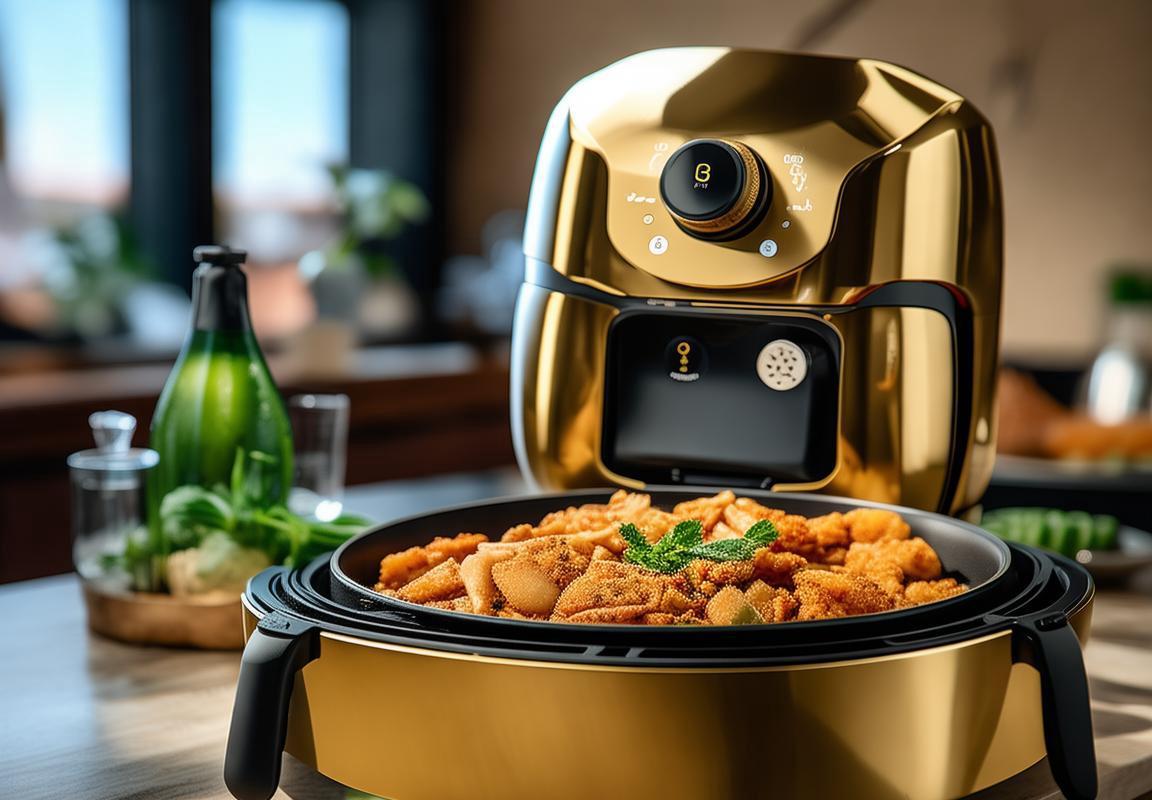
IX.Conclusion
In reflecting on the journey of air fryer OEMs and the critical role of UL certification, it’s clear that the industry is poised for continued growth and innovation. The market dynamics in Europe and America highlight the need for adaptability and compliance, while the turnkey approach to UL certification offers a streamlined path to success. Case studies showcase the tangible benefits of this process, and the future trends indicate a market that is both evolving and expanding. As we draw to a close, let’s consider the broader implications of these developments.
The air fryer market is not just about the product itself; it’s about the lifestyle it represents. As consumers seek healthier alternatives to traditional frying methods, the air fryer has become a symbol of convenience and wellness. The turnkey UL certification process has been instrumental in ensuring that these products meet the highest safety standards, which in turn builds consumer trust and loyalty.
The European and American markets, with their distinct regulatory landscapes, present unique challenges for OEMs. However, they also offer diverse opportunities. For instance, the European market’s focus on energy efficiency and eco-friendly designs has spurred a wave of innovation in air fryer technology. Similarly, the American market’s emphasis on safety and ease of use has driven the development of user-friendly features and advanced functionalities.
As we delve into the case studies of successful turnkey UL certification for air fryer OEMs, we see a pattern of strategic planning and execution. These companies have navigated the complexities of certification by partnering with experts who understand both the technical requirements and the regulatory nuances. This collaboration has not only expedited the certification process but has also resulted in products that are well-received by consumers.
Looking ahead, the air fryer market is expected to witness several trends and predictions. One such trend is the integration of smart technology, allowing users to control their air fryers remotely via apps. Another prediction is the rise of air fryers with more sustainable materials, reflecting the growing demand for environmentally friendly products. Moreover, there’s a potential for air fryers to become more versatile, with attachments and accessories that cater to a wider range of cooking needs.
In conclusion, the turnkey approach to UL certification for air fryer OEMs is a testament to the industry’s commitment to excellence and safety. It’s a process that not only ensures compliance with stringent regulations but also fosters innovation and customer satisfaction. As the market continues to evolve, the role of OEMs in driving this transformation is undeniable. They are not just manufacturers; they are architects of the future of kitchen appliances, crafting products that are not only safe but also resonate with the changing demands and values of consumers worldwide. The journey of air fryer OEMs, from design to certification, is a story of perseverance, innovation, and a relentless pursuit of quality.